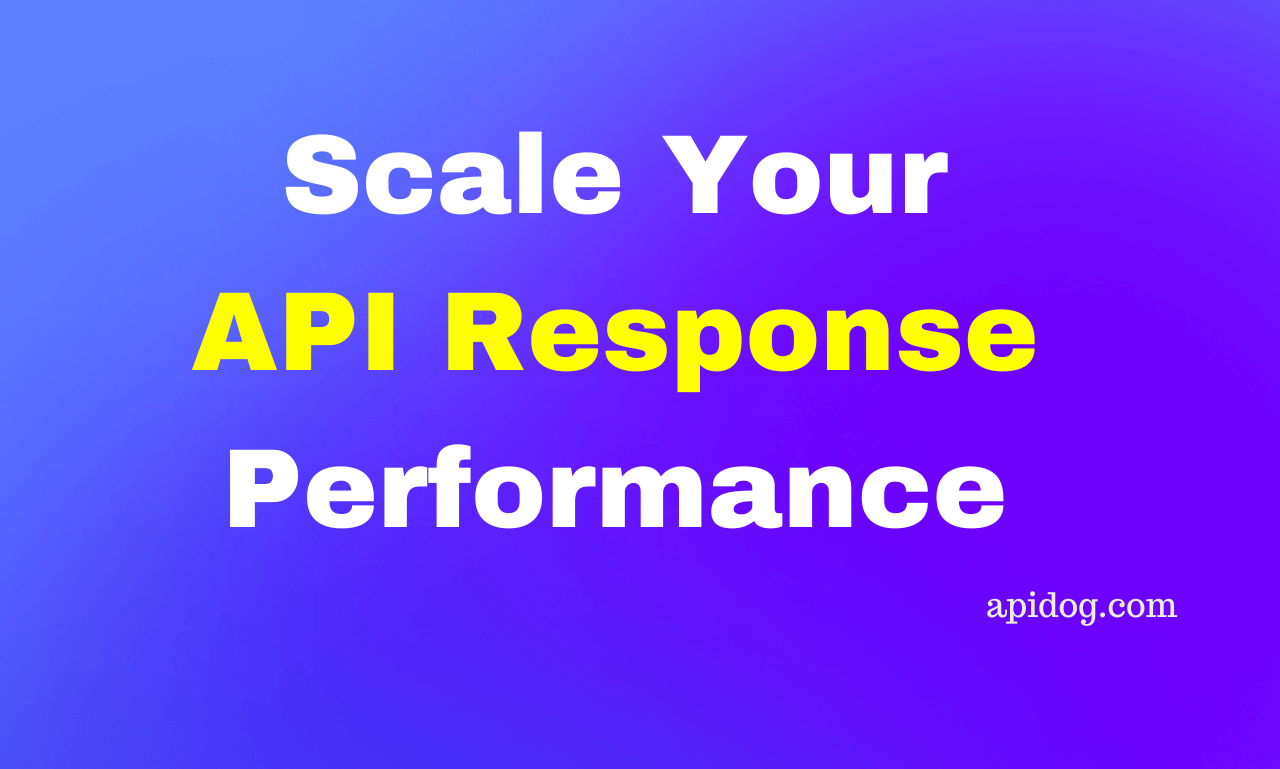How to Use the Slack API | Use & Test the Slack API Online
The Slack API provides developers with a platform to build custom integrations and automate workflows within the Slack messaging platform. It offers a wide range of features, including messaging and file sharing to collaborate effectively and streamline communication processes for teams online.
Description
By utilizing the Slack API, you can integrate the Slack platform with external applications and services. In this article, we will provide a comprehensive explanation of the basic information about the Slack API, and introduce how to use and test the Slack API online using Apidog, a comprehensive API tool.
Slack is a business communication tool for teams, utilized in various scenarios. Integrating external applications and services with the Slack platform can be achieved by leveraging the Slack API. This article will provide a complete explanation of the Slack API's basic information and introduce how to use and test the Slack API online using Apidog, a comprehensive API tool.
Additionally, it's a completely free tool, so you can start using Apidog for free by clicking the button below! 👇👇👇
What is Slack?
Slack is a business communication tool designed for teams. Its main features are as follows:

Channel Feature: Create channels based on projects or topics, allowing related parties to communicate. Past conversations are also preserved, making information sharing easier.
Direct Messages: Directly exchange messages with individuals or multiple people.
Various Integrations: Integrate with other services and development tools like GitHub, Google Drive, and Trello, receiving notifications from them within Slack.
Mobile App: Accessible from smartphones and tablets.
Customizable: Add custom emojis, chatbots, and more.
Slack is utilized by many companies and organizations to enhance work efficiency and promote team communication. It has become particularly valuable with the rise of remote work.
Use Cases for Slack
Currently, numerous organizations and companies have adopted Slack. How do these organizations utilize Slack's services? This section will introduce some of the ways Slack is being utilized.
Generally, companies and organizations use Slack for the following purposes:
Project Management
- Use channels for information sharing, progress reporting, and addressing questions among project members.
- Centrally share related documents and files.
- Integrate with external development tools (e.g., GitHub) to receive push notifications.
Internal Communication
- Set up channels for departments or teams to share information.
- Broadcast company-wide announcements through channels.
- Create off-topic chat channels to foster communication and engagement.
Remote Work
- Text-based communication is the primary mode, making it suitable for remote environments.
- Voice and video call features enable online meetings.
- Mobile app allows access to information anytime, anywhere.
Customer Support
- Create channels for internal and external support teams to handle inquiries.
- Refer to past support histories, aiding knowledge sharing.
Slack serves as a hub for seamless collaboration across projects, and internal and external communication, fostering productivity and enhancing team communication in various scenarios.
Integrating with Slack via the Slack API
While Slack is a service for general users, developers need to utilize the Slack API to integrate Slack into their projects. The Slack API is an interface for integrating the Slack platform with external applications and services. Using the Slack API enables the following:

What You Can Do with the Slack API
- Creating Bots (Slack Apps)
You can create conversational bots, allowing them to join your Slack team or channels. Bots can send and receive messages, react to conversations, and automate tasks. - Read/Send Slack Data
You can read data from Slack (messages, files, channel information, etc.) or send new data via the API. - Integrate with External Services
Bring information from external services like GitHub, Google Calendar, and Trello into Slack, or send instructions from Slack to those services. - Customize Slack Apps
Customize various features of Slack apps, such as message display, adding custom emojis, and executing commands.
The Slack API provides RESTful APIs and WebSocket-based realtime APIs, which can be used for different purposes. Official SDKs are also available. Leveraging the Slack API allows you to customize Slack, enhancing your team's productivity and communication quality.
Slack API Pricing Structure
You don't necessarily have to pay to use the Slack API. The permissions to use the Slack API depend on your current Slack plan. Regardless of whether you use the API or not, you don't need to pay extra for API usage.
The pricing structure for the Slack API aligns with Slack's usage plans. Slack offers multiple plans with varying prices. For more detailed information about Slack's pricing structure, visit the following page:
Free Plan
- Unlimited Bot installation in your Slack Workspace (team)
- Ability to use most API methods
- Subject to certain limitations (data retention period, concurrent connections, etc.)
Paid Plans (Monthly Subscription)
- Pro: $10.50 per user/month (or $9.25 per user/month if paid annually)
- Enterprise Grid: $18 per user/month (or $16 per user/month if paid annually)
Paid plans provide additional features, including:
- Slack's Enterprise Grid (manage multiple Workspaces centrally)
- SAML single sign-on, Compliance management, SSO Provisioning, and more
- Advanced analytics and reporting
- Priority support
- Improved reliability and security (99.99% uptime, encrypted data transfer, etc.)
- Removal of most limitations (unlimited data retention, unlimited Bot count, etc.)
Slack's pricing model allows you to choose from free to paid plans based on the number of users and required features. Extensive use of the Slack API often necessitates a paid plan.
Summary of Slack API Pricing
| Plan | Price | Main Features |
|---|---|---|
| Free Plan | Free | - Unlimited Bot installation in Workspace (team) - Ability to use most API methods - Certain limitations on data retention period, concurrent connections, etc. |
| Paid Plan (Pro) | $10.50 per user/month ($9.25 per user/month if paid annually) |
- Access to all Slack features - SAML single sign-on - Advanced analytics and reporting - Priority support - Removal of most limitations |
| Paid Plan (Enterprise Grid) | $18 per user/month ($16 per user/month if paid annually) |
- Centralized management of multiple Workspaces with Enterprise Grid - Compliance management, SSO Provisioning, and more - 99.99% uptime guarantee - Enhanced security with encrypted data transfer |
To fully utilize Slack's features, a paid plan is required. You will need to choose between the Pro or Enterprise Grid plan based on the number of users and required features. Additional charges may apply for large-scale Bot deployments.
Using the Slack API: API Tokens Required
To use the Slack API, you need an authentication token (Token).
Types of Tokens for the Slack API
There are various token types used in the Slack API. Here are the main token types:
To learn about all token types, visit the official Slack API page on Token Types:

Bot User OAuth Token
- Token issued when adding a Bot to Slack
- Allows sending and receiving messages, file operations, etc., with Bot permissions
User OAuth Token
- Token issued when a user installs a Slack app
- Allows operations with that user's permissions
Workspace Token
- Token issued by a Workspace
- Allows retrieving Workspace information, changing settings, etc.
Token permissions are controlled by scopes, which define the access range. For example, the chat:write scope allows posting messages, but the channels:read scope is required to read channel information.
Handling tokens requires caution, and you should adhere to the following best practices:
- Store tokens securely and avoid exposing them
- Regularly check expiration dates and rotate tokens
- Grant only the minimum required scopes
Proper token management and scope limitation can prevent API misuse and data leaks. Security measures should be thoroughly implemented.
Obtaining Slack API Tokens
How do you obtain Slack API tokens? Here are the steps to get Slack API tokens.
Obtaining the App Configuration Token
Step 1: Click the following link to access the Slack app page:

Step 2: Click the "Generate Token" button to start generating the App Configuration Token. In the new window that appears, select your Workspace and click the "Generate" button.

Step 3: You have now generated the Slack App Configuration Token. Copy and utilize this token.

Obtaining the App-level Token
To obtain an App-level Token, you need to create a Slack app first.
Step 1: Click the following link to access the Slack app page:
Step 2: On this page, click the "Create an App" button to start creating a Slack app.
Step 3: Enter the app's information and complete the necessary settings. Once the app is created, you will be automatically redirected to the app's settings page. Scroll down on this page to generate the App-level Token.

Step 4: Click the "Generate Token and Scopes" button to define the scopes and generate the token.

Following these steps, you can now utilize Slack API tokens. By using the most user-friendly API management tool, you can easily use and test the Slack API.
Easily Use and Test the Slack API with Apidog
Apidog provides an API Hub service, a comprehensive API management tool. The API Hub consolidates various third-party APIs, allowing users to access and easily use, test, and generate client code to integrate the Slack API into their projects using Apidog.
Steps to Use & Test the Slack API with Apidog
The Slack API project is included in Apidog's API Hub, so you can easily access and use the Slack API project by following this link:

Step 1: Access the Apidog API Hub project to immediately start using the Slack API.
Step 2: On this page, click the "Try it out" button, switch to the "Headers" tab, and enter your Slack "Token".

Step 3: Switch to the "Body" tab, enter the required information for the Slack API endpoint, and click the "Send" button to send a request to the Slack API server.

Additionally, to conveniently integrate the Slack API into your project, you can select a programming language in the "Request Samples" module and copy the necessary client code.

Summary
In this article, we have thoroughly explained what Slack is, an overview of the Slack API and its usage, pricing structure, and how to obtain tokens. Furthermore, we introduced how to easily use and test the Slack API online using Apidog, an API platform.
Slack is a business communication tool adopted by many companies and organizations. It is utilized in various scenarios such as project management, internal communication, remote work, and customer support. By leveraging the Slack API, you can create bots, manipulate messages and data, integrate with external services, and customize applications. Tokens are required for API usage and must be managed properly.
Through Apidog's API Hub, you can access the Slack API project, immediately try out the API online, and benefit from convenient features like sample code generation. To maximize Slack's capabilities and significantly enhance your team's productivity and communication, be sure to leverage Apidog.






